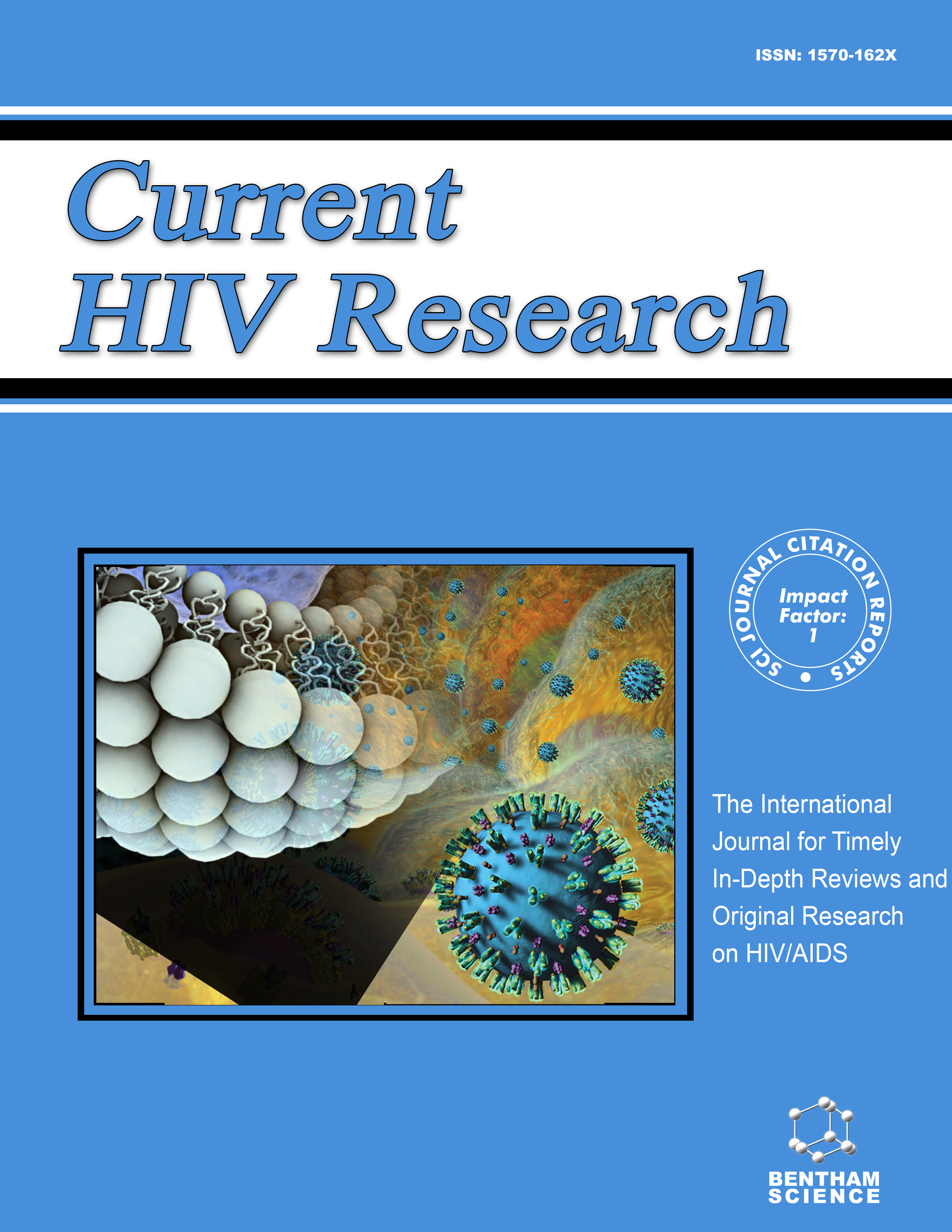- Home
- A-Z Publications
- Current HIV Research
- Previous Issues
- Volume 11, Issue 5, 2013
Current HIV Research - Volume 11, Issue 5, 2013
Volume 11, Issue 5, 2013
-
-
Protective Antiviral Antibodies that Lack Neutralizing Activity: Precedents and Evolution of Concepts
More LessAntibody-mediated resistance to viral disease is often attributed solely to neutralizing antibodies (NAbs) despite a body of evidence -- more than 30 years in the making -- to show that other populations of antibodies (protective non-neutralizing antibodies, PnNAbs) can also contribute and are sometimes pivotal in host resistance to viruses. Recently, interest in varieties of PnNAbs has been restored and elevated by an HIV vacci Read More
-
-
-
Qualitative and Quantitative Variables that Affect the Potency of Fc- Mediated Effector Function In Vitro and In Vivo: Considerations for Passive Immunization Using Non-Neutralizing Antibodies
More LessPassive immunization studies in non-human primates have established unequivocally that virus neutralization can prevent infection, providing the impetus for current intense efforts to identify immunogens that elicit broadly neutralizing antibodies in humans. Although Fc-mediated effector function may also contribute to protection by neutralizing antibodies, its role in protection by non-neutralizing antibodies is controversial. Read More
-
-
-
Opportunities to Exploit Non-Neutralizing HIV-Specific Antibody Activity
More LessAuthors: Margaret E. Ackerman and Galit AlterAntibodies act as a nexus between innate and adaptive immunity: they provide a means to engage a spectrum of innate immune effector cells in order to clear viral particles and infected cells and prime antigen presentation. This functional landscape is remarkably complex, and depends on antibody isotype, subclass, and glycosylation; the expression levels and patterns of a suite of Fc receptors with both complementary and Read More
-
-
-
Epitope Specificity of Human Immunodeficiency Virus-1 Antibody Dependent Cellular Cytotoxicity [ADCC] Responses
More LessAntibody dependent cellular cytotoxicity [ADCC] has been suggested to play an important role in control of Human Immunodeficiency Virus-1 [HIV-1] viral load and protection from infection. ADCC antibody responses have been mapped to multiple linear and conformational epitopes within the HIV-1 envelope glycoproteins gp120 and gp41. Many epitopes targeted by antibodies that mediate ADCC overlap with those recognized Read More
-
-
-
HIV-Specific Antibody Immunity Mediated Through NK Cells and Monocytes
More LessAuthors: Marit Kramski, Matthew S. Parsons, Ivan Stratov and Stephen J. KentThe partial success of the RV144 trial re-energized the field of HIV vaccine research, which had stalled after vaccines based on neutralizing antibody and cytotoxic T cells had failed to induce protection. A large post-vaccine research effort has focused attention on the role of non-neutralizing antibodies in the protection afforded by the RV144 vaccine. These binding antibodies can initiate immune responses such as Read More
-
-
-
Fc Receptor-Mediated Immune Responses: New Tools But Increased Complexity in HIV Prevention
More LessAuthors: Diego A. Vargas-Inchaustegui and Marjorie Robert-GuroffThe modest success of the RV144 HIV vaccine trial in Thailand and the ensuing suggestion that a Fc-receptormediated antibody activity might have played a role in the protection observed have intensified investigations on Fcrelated immune responses. HIV neutralizing antibodies have been and continue to be the focal point of research into humoral immune protection. However, recent knowledge that their protective efficacy ca Read More
-
-
-
Antibody-Dependent Enhancement and the Risk of HIV Infection
More LessAuthors: Andrea Gorlani and Donald N. ForthalAntibody-dependent enhancement (ADE) of infection has been described for a number of viruses including HIV-1. However, the biological role of ADE in HIV disease pathogenesis or in increasing the risk of infection upon exposure is uncertain. In this review, we outline the mechanisms of ADE, as ascertained in vitro. We also discuss several recent human and non-human primate studies that raise concern about ADE resulting fr Read More
-
-
-
HIV-1 Variable Loop 2 and its Importance in HIV-1 Infection and Vaccine Development
More LessAuthors: Mangala Rao, Kristina K. Peachman, Jiae Kim, Guofen Gao, Carl R. Alving, Nelson L. Michael and Venigalla B. RaoA vaccine that can prevent the transmission of HIV-1 at the site of exposure to the host is one of the best hopes to control the HIV-1 pandemic. The trimeric envelope spike consisting of heterodimers, gp120 and gp41, is essential for virus entry and thus has been a key target for HIV-1 vaccine development. However, it has been extremely difficult to identify the types of antibodies required to block the transmission of various HI Read More
-
Volumes & issues
-
Volume 23 (2025)
-
Volume 22 (2024)
-
Volume 21 (2023)
-
Volume 20 (2022)
-
Volume 19 (2021)
-
Volume 18 (2020)
-
Volume 17 (2019)
-
Volume 16 (2018)
-
Volume 15 (2017)
-
Volume 14 (2016)
-
Volume 13 (2015)
-
Volume 12 (2014)
-
Volume 11 (2013)
-
Volume 10 (2012)
-
Volume 9 (2011)
-
Volume 8 (2010)
-
Volume 7 (2009)
-
Volume 6 (2008)
-
Volume 5 (2007)
-
Volume 4 (2006)
-
Volume 3 (2005)
-
Volume 2 (2004)
-
Volume 1 (2003)
Most Read This Month
Article
content/journals/chr
Journal
10
5
false
en


